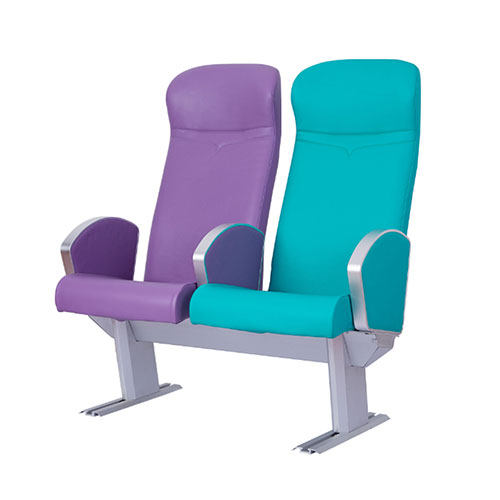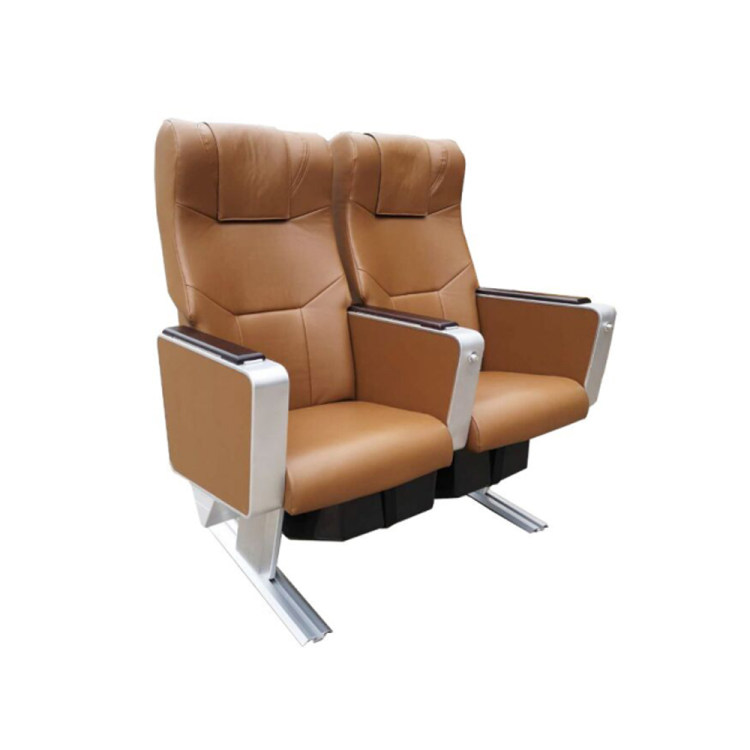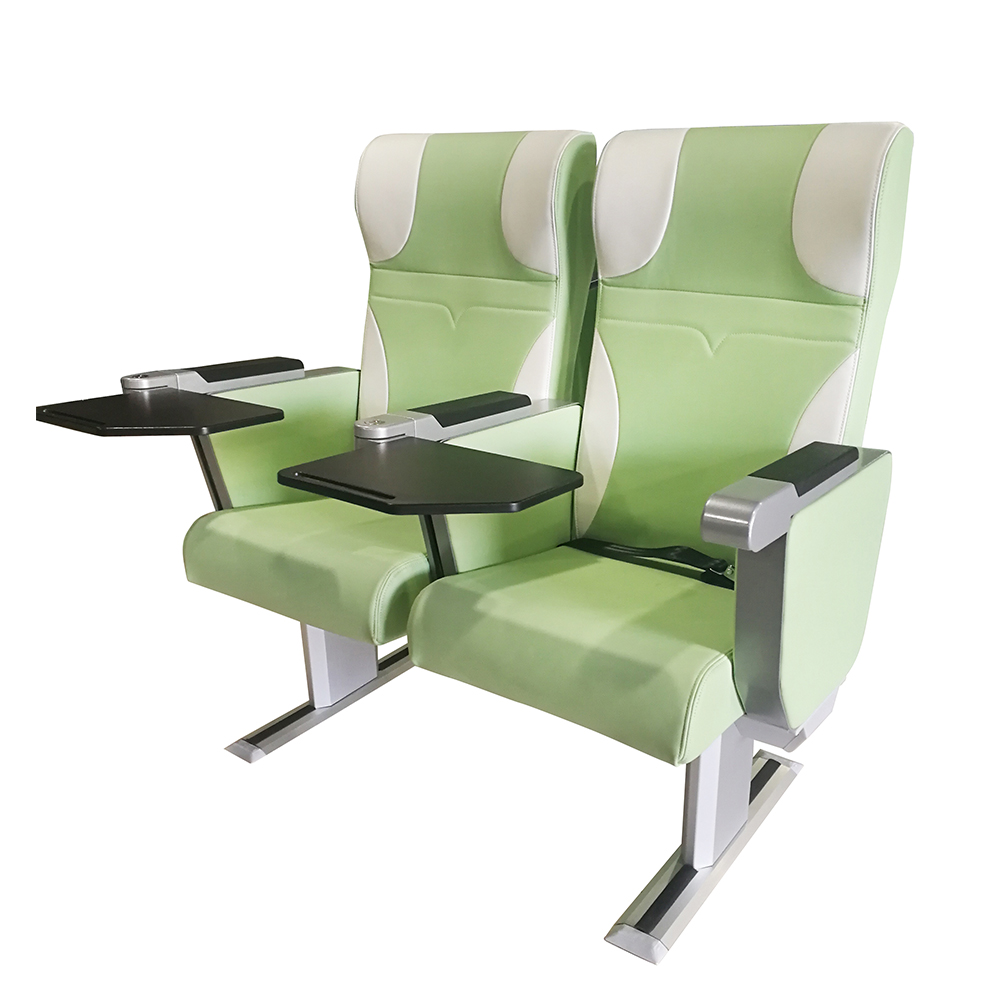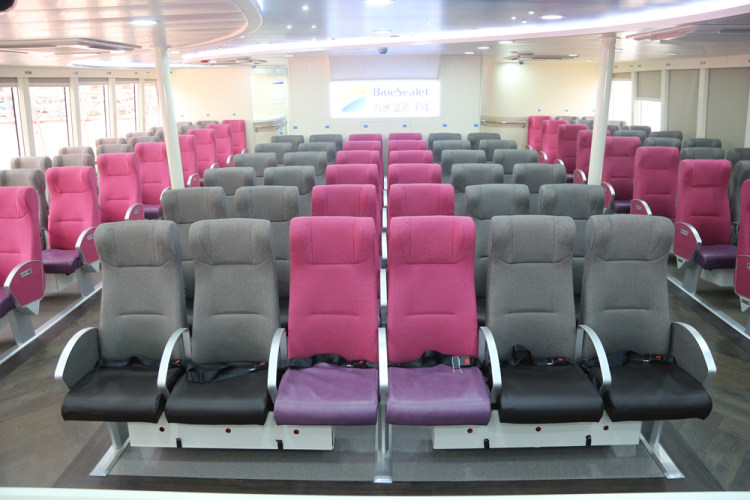How to Enhance the Safety and Crashworthiness of Marine Passenger Seats
Design and implementation of crashworthy seating are key aspects of ensuring passenger safety. Enhancing the safety and crashworthiness of marine passenger seats involves a combination of engineering, material science, ergonomic design, and compliance with safety regulations.

Importance of Crashworthy Marine Passenger Seats
Crashworthy marine passenger seats are specifically designed to protect occupants during collisions, sudden stops, or other impact events.
1. Passenger Protection
- Minimizing Injury Risk: The primary purpose of crashworthy seats is to minimize the risk of injury to passengers during an accident. By absorbing and dissipating impact forces, these seats help reduce the severity of injuries, which can range from minor bruises to life-threatening conditions.
- Energy Absorption: Crashworthy seats are equipped with energy-absorbing materials and structures that deform in a controlled manner during a collision. This absorption capability is crucial in protecting passengers from the full force of an impact.
- Securing Passengers: Features such as integrated seat belts and harnesses ensure that passengers remain securely seated, reducing the likelihood of being thrown from their seats during sudden maneuvers or impacts.
2. Compliance with Safety Standards
- Regulatory Adherence: Marine passenger chairs must comply with international and national safety standards, such as those set by the International Maritime Organization (IMO) and other regulatory bodies. Compliance ensures that the seats meet minimum safety requirements, providing a baseline level of protection.
- Testing and Certification: Crashworthy seats undergo rigorous testing and certification processes to verify their effectiveness in protecting passengers. These tests simulate real-world impact scenarios, ensuring that the seats perform as expected under various conditions.
- Reputation and Trust: Vessels equipped with compliant, crashworthy seats enhance the reputation of the operator by demonstrating a commitment to passenger safety. This builds trust and confidence among passengers and regulatory bodies.
3. Enhancing Travel Experience
- Passenger Comfort: While safety is paramount, crashworthy seats are also designed with passenger comfort in mind. Ergonomic designs and adjustable features help ensure that passengers remain comfortable during their journey, even under rough sea conditions.
- Confidence and Peace of Mind: Knowing that the seats are designed to protect them in the event of an accident gives passengers peace of mind. This confidence can enhance their overall travel experience, making them more likely to choose marine transportation in the future.
- Reducing Anxiety: Passengers are less likely to experience anxiety related to safety when they are aware that the seats are designed to provide protection. This can lead to a more relaxed and enjoyable journey.
4. Operational and Economic Benefits
- Reduced Liability: By investing in crashworthy seats, vessel operators can potentially reduce their liability in the event of an accident. Effective passenger protection can lead to fewer injuries and, consequently, fewer legal and financial repercussions.
- Maintenance and Durability: Crashworthy seats are often built to withstand harsh marine environments, contributing to their durability and longevity. Regular maintenance and proper care further extend their service life, providing long-term economic benefits to operators.
- Market Competitiveness: Operators who prioritize passenger safety through the use of crashworthy seats can differentiate themselves in a competitive market. Highlighting safety features can attract safety-conscious passengers and improve market share.

Key Strategies to Enhance Safety and Crashworthiness of Marine Passenger Seats
1. Advanced Materials
High-Strength Alloys
- Usage: Utilize high-strength aluminum or stainless steel alloys for seat frames.
- Benefits: Provides robust structural integrity while keeping weight manageable, enhancing overall safety without compromising vessel performance.
Composite Materials
- Usage: Incorporate advanced composites like carbon fiber reinforced polymers (CFRP).
- Benefits: Offer high strength-to-weight ratios and excellent energy absorption characteristics, crucial for impact scenarios.
Shock-Absorbing Foam
- Usage: Use shock-absorbing foam in seat cushions.
- Benefits: Helps dissipate impact energy, reducing the force transferred to passengers and minimizing injury risk.
2. Ergonomic Design
Proper Seat Geometry
- Usage: Design seats with appropriate dimensions and contours.
- Benefits: Marine seats should ensure passenger comfort and proper posture, which can help mitigate injury during impacts.
Adjustable Features
- Usage: Incorporate adjustable headrests, armrests, and recline mechanisms.
- Benefits: Accommodates different body sizes and enhances comfort and safety.
Harness Systems
- Usage: Integrate seat belts or harness systems.
- Benefits: Secures passengers during turbulent conditions or collisions, significantly reducing injury risk.
3. Energy-Absorbing Structures
Crushable Zones
- Usage: Designing marine passenger seat structures with crushable zones that deform predictably under impact.
- Benefits: Absorbs energy and reduces the force transmitted to passengers, enhancing safety.
Deformable Elements
Usage: Incorporate deformable elements such as collapsible legs or seat backs.
Benefits: Absorbs impact energy, further protecting passengers.

4. Compliance with Safety Standards
Regulatory Standards
- Usage: Ensure seats meet or exceed relevant safety standards, such as those set by the International Maritime Organization (IMO) or national authorities.
- Benefits: Guarantees a baseline level of protection and compliance with legal requirements.
Regular Testing
- Usage: Conduct rigorous testing, including crash simulations and physical impact tests.
- Benefits: Validates the crashworthiness of seat designs, ensuring they perform as expected under various conditions.
5. Innovative Seat Designs
Modular Seats
- Usage: Design seats with modular components that can be easily replaced or upgraded.
- Benefits: Enhances safety features and allows for quick updates and repairs.
Suspension Systems
- Usage: Integrate suspension systems to absorb vibrations and shocks.
- Benefits: Provides a smoother ride and additional protection during impacts.
Smart Technologies
- Usage: Implement sensors and smart technologies to monitor seat conditions.
- Benefits: Alerts passengers or crew to potential issues, enhancing safety and maintenance efficiency.
6. Installation and Maintenance
Proper Installation
- Usage: Ensure seats are securely anchored to the vessel’s structure.
- Benefits: Prevents detachment during impacts, maintaining passenger safety.
Regular Inspections
- Usage: Conduct regular inspections and maintenance.
- Benefits: Identifies and addresses wear, corrosion, or damage that could compromise seat safety.
Training and Awareness
- Usage: Provide training for crew members on the proper use and maintenance of passenger seats.
- Benefits: Ensures seats remain in optimal condition, enhancing safety.
7. Case Studies and Examples
- High-Speed Ferries: High-speed ferries operating in rough sea conditions benefit from crashworthy ferry seats designed with advanced materials and suspension systems to protect passengers during high-impact scenarios.
- Luxury Cruise Liners: On luxury cruise liners, ergonomic designs and adjustable features enhance passenger comfort and safety, ensuring a pleasant and secure travel experience.
- Rescue Vessels: Rescue vessels equipped with shock-absorbing seats provide crucial protection for crew members and passengers during emergency operations and high-speed maneuvers.

Conclusion
Enhancing the safety and crashworthiness of marine passenger seats is a multifaceted challenge that requires innovation, adherence to standards, and ongoing maintenance. Through adopting advanced materials, ergonomic designs, energy-absorbing structures, and smart technologies, marine seat manufacturers can significantly improve passenger safety.Ensuring proper installation and regular maintenance further guarantees that these safety features remain effective throughout the lifespan of the vessel.

